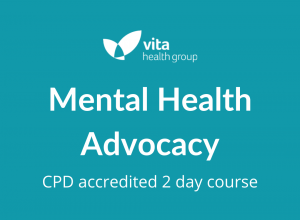Share
Falls are one of the leading causes of injury as we age, but they’re not inevitable. Frailty – characterised by reduced strength, endurance, and balance, can be slowed or even reversed with the right movement and exercise.

Physiotherapy can help by:
-
Improving balance with targeted exercises to keep you steady.
-
Increasing muscle strength to make everyday activities easier.
-
Enhancing flexibility & posture to reduce stiffness and instability.
-
Assessing your fall risk and creating a personalised prevention plan.
Simple Daily Tips for Healthy Ageing
-
Stand up and move every 30–45 minutes.
-
Include resistance exercises 2–3 times a week.
-
Practise balance drills, like standing on one leg for 10–20 seconds.
-
Make your home safer—remove loose rugs, improve lighting, and keep walkways clear.
Here are some tips from our Physiotherapist, Lauren Taylor, to incorporate into your daily routine!
Balance Training:

Balance training helps our body systems communicate more effectively, allowing quicker reactions to changes in posture or environment. As we age, these pathways can become less responsive without regular practice — increasing the risk of falls.
Activities like yoga, tai chi, or dancing help keep these systems sharp. But if those aren’t accessible, here are simple daily exercises:
- Heel-toe stand
- Single-leg stand
- Heel-toe walking (forwards and backwards)
- Sideways walking
Aim for 1–2 minutes of each daily.
Always ensure you have a steady surface nearby to hold on to if needed.
To make these harder:
- Close your eyes to challenge proprioception and vestibular control
- Move your head while balancing to disrupt visual cues
- Stand on an uneven surface for an extra challenge
Cardiovascular Fitness:

Activities like walking, swimming, or cycling keep your heart, lungs, and circulation strong. They makes us more efficient in using oxygen, reducing fatigue helping to keep us upright for longer and allowing timely reactions when necessary.
National institute of health (NIH) recommend aiming for at least 150 minutes or moderate intensity activity per week, or 75 minutes of vigorous activity.
Moderate activity will raise your heart rate, and make you breathe faster and feel warmer, you should still be able to talk in full sentences.
Vigorous activity will make you breathe hard and fast, you’ll only be able to manage saying a few words at a time.
A combination of the two throughout the week is ideal.
Strength Training:

Strength training builds the muscle needed to support joints, protect bones, and improve mobility. As we age, we naturally lose muscle — a condition called sarcopenia — but regular resistance work can slow or even reverse it.
NIH recommends undergoing muscle strengthening activities twice a week. This can include structured resistance training or even heavy DIY or gardening work.
Stronger muscles can co-ordinate and respond faster to maintain balance when moving and with unpredictable changes in posture. They also provide greater stability to our joints.
The key muscle groups to focus on are our core muscles, quadriceps, hamstrings and calves. Having strong legs is important for supporting our body weight, keeping us upright and making fast adjustments to keep our balance.
Examples of strength exercises include:
- Sitting to standing from a chair
- Heel raises
- Mini squats
- Side leg lifts
- Step ups
Aim for 3 sets of 10 repetitions to build functional strength.
To progress, gradually increase the challenge (known as progressive overload) by:
- Adding resistance (bands or weights)
- Moving to single-leg versions
Fit movement into daily life:
The best plan is the one you’ll do!
Fitting activity into your daily routine is the key to success, sneak in extra activity by taking the stairs, walking to work, squatting whilst brushing your teeth or standing on one leg whilst the kettle boils.
To stick to your plan, you need to enjoy it! All movement is exercise and counts towards you weekly recommended amount helping to combat fragility in later life.
Whether it’s dancing, gardening, or walking with friends, choose activities you look forward to — you’ll be far more likely to stick with it.
Falls aren’t a certainty, but strength, balance, and independence are achievable goals. Start small. Move daily. Stay steady.
Related News
Vita is an award-winning, CQC registered healthcare provider














